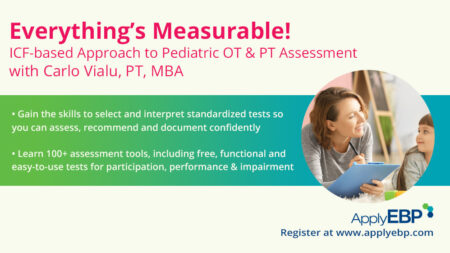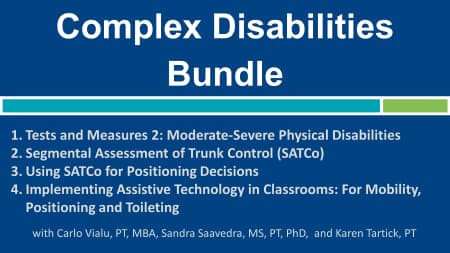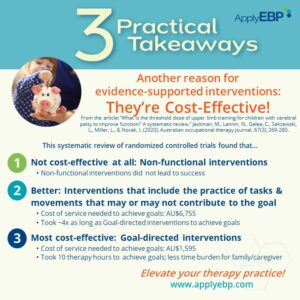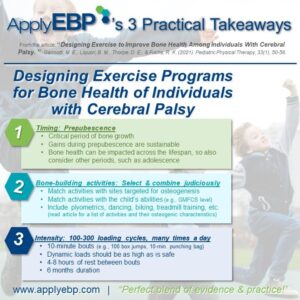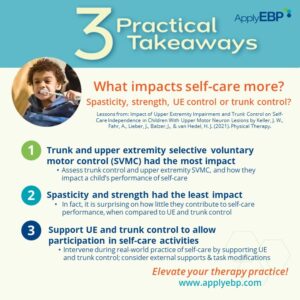3 Practical Takeaways
Free Tools to Measure and Monitor Self-care
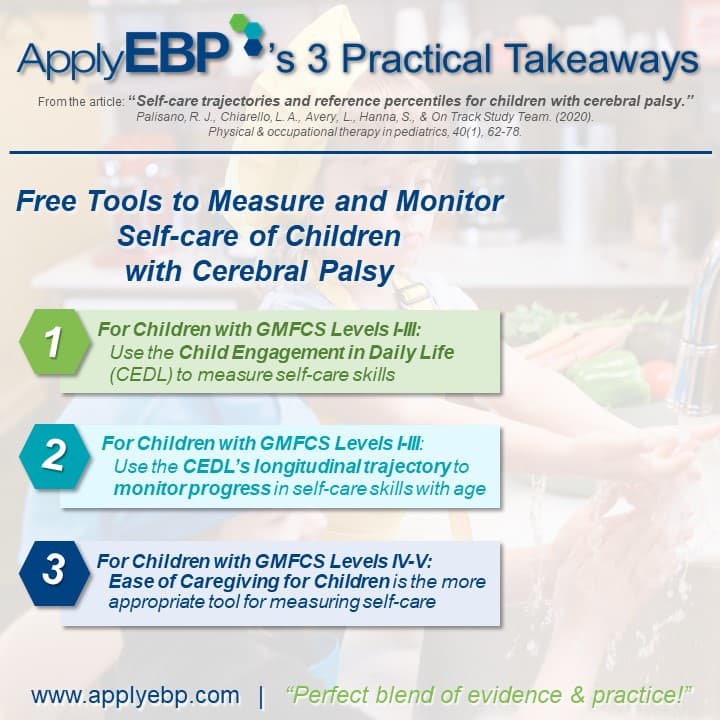
How do you measure self-care skills? Here are 2 free tools for occupational and physical therapy practitioners to measure self-care in children with Cerebral Palsy. Make sure you use the appropriate one depending on the child’s Gross Motor Functional Classification Level.
Here are the links to these 2 tests:
Click below to download,
print and share the infographics
Continue to Elevate Your Practice with Our...
Featured School
Symposium
The Well-Equipped Therapist!
- Symposium
The Well-Equipped Therapist!
- Symposium
The Well-Equipped Therapist!
- Symposium
Featured Live
Workshop
Everything’s Measurable!
- Single Topic
Featured On-Demand
Webinar
SATCo for Adaptive Positioning
Featured Webinar
Bundle
Complex Disabilities Bundle
Reference:
Wentz, E. E., Looper, J., Menear, K. S., Rohadia, D., & Shields, N. (2021). Promoting participation in physical activity among children and adolescents with Down syndrome. Physical Therapy.
More Practical Takeaways
#3PracticalTakeaways based on the systematic review of Jackman et al (2020) on the effectiveness and cost of different upper limb training approaches for children with cerebral palsy
Let’s design physical exercise programs that are intentional and evidence-informed! If the goal of the therapy program is bone health, look no further than this work of Gannoti et al (2021).
#3PracticalTakeawaysfrom the article by Keller et al (2021) on how much spasticity, strength, upper extremity (UE) control and trunk control contributes to self-care performance.


